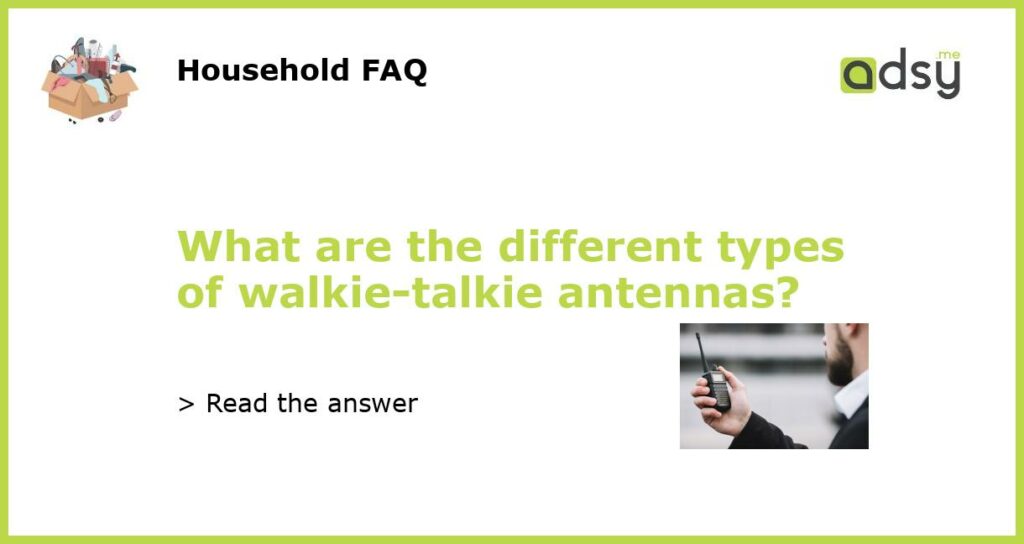Types of Walkie-Talkie Antennas
Walkie-talkies, also known as two-way radios, are portable communication devices commonly used in various industries, including construction, security, and outdoor activities. One of the key components of a walkie-talkie is its antenna. The antenna is responsible for transmitting and receiving radio signals, which is essential for clear communication. In this article, we will discuss the different types of walkie-talkie antennas and their features.
Rubber Duck Antenna
The rubber duck antenna, also known as a stubby antenna, is the most common type of antenna found on most walkie-talkies. It is named for its short, flexible length, resembling a rubber duck. Rubber duck antennas are typically compact and durable, making them suitable for rugged environments. They are also omnidirectional, which means they can transmit and receive signals in all directions. However, due to their relatively short size, rubber duck antennas may have limited range compared to other antenna types.
Whip Antenna
The whip antenna, also known as a long-range antenna or a telescopic antenna, is longer and more robust compared to a rubber duck antenna. Whip antennas can be extended or retracted, allowing users to adjust the length based on their needs. This flexibility in length provides better range and signal reception, making whip antennas ideal for long-distance communication. However, whip antennas are usually more cumbersome and less durable than rubber duck antennas.
Helical Antenna
The helical antenna, also known as a spiral antenna, is a compact and efficient antenna design commonly used in walkie-talkies. This antenna type features a coiled wire wound in a helix shape, with a specific predetermined pitch. Helical antennas provide excellent signal efficiency and a wide bandwidth, making them suitable for both short-range and long-range communication. Additionally, helical antennas are less prone to interference from nearby objects and tend to have better signal performance in congested areas.
Yagi Antenna
The Yagi antenna, also known as a directional antenna, is a specialized antenna design commonly used in walkie-talkies that require extended range and improved signal strength in a specific direction. Yagi antennas consist of multiple metal elements arranged in a specific pattern. The design allows the antenna to focus and direct the radio signals in a narrow beam, increasing the range and reducing interference from other directions. However, Yagi antennas are typically larger and less portable compared to other antenna types.
Stubby Antenna
The stubby antenna is similar to the rubber duck antenna in terms of size and appearance. However, stubby antennas are specialized antennas designed for specific frequency ranges or applications. They are typically shorter than rubber duck antennas and have a more focused signal transmission. Stubby antennas are often used in walkie-talkies operating in specific frequency bands or environments with interference concerns. They offer improved signal quality and reduce the risk of interference from nearby sources.
In summary, walkie-talkies come with various types of antennas to suit different communication needs and environments. The rubber duck antenna is the most common and versatile, while whip antennas provide better range. Helical antennas offer improved efficiency and performance, Yagi antennas provide directional strength, and stubby antennas are specialized for specific applications. Choosing the right antenna type for your walkie-talkie depends on your specific requirements and usage scenarios.






